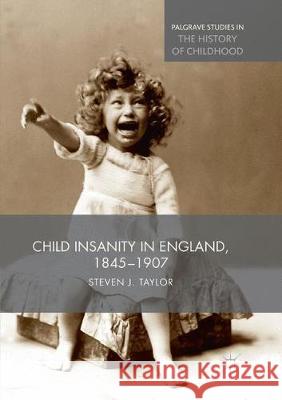Child Insanity in England, 1845-1907 » książka
topmenu
Child Insanity in England, 1845-1907
ISBN-13: 9781349956067 / Angielski / Miękka / 2018 / 188 str.
Kategorie BISAC:
Wydawca:
Palgrave MacMillan
Seria wydawnicza:
Język:
Angielski
ISBN-13:
9781349956067
Rok wydania:
2018
Wydanie:
Softcover Repri
Ilość stron:
188
Waga:
0.25 kg
Wymiary:
21.01 x 14.81 x 1.12
Oprawa:
Miękka
Wolumenów:
01
Dodatkowe informacje:
Wydanie ilustrowane











